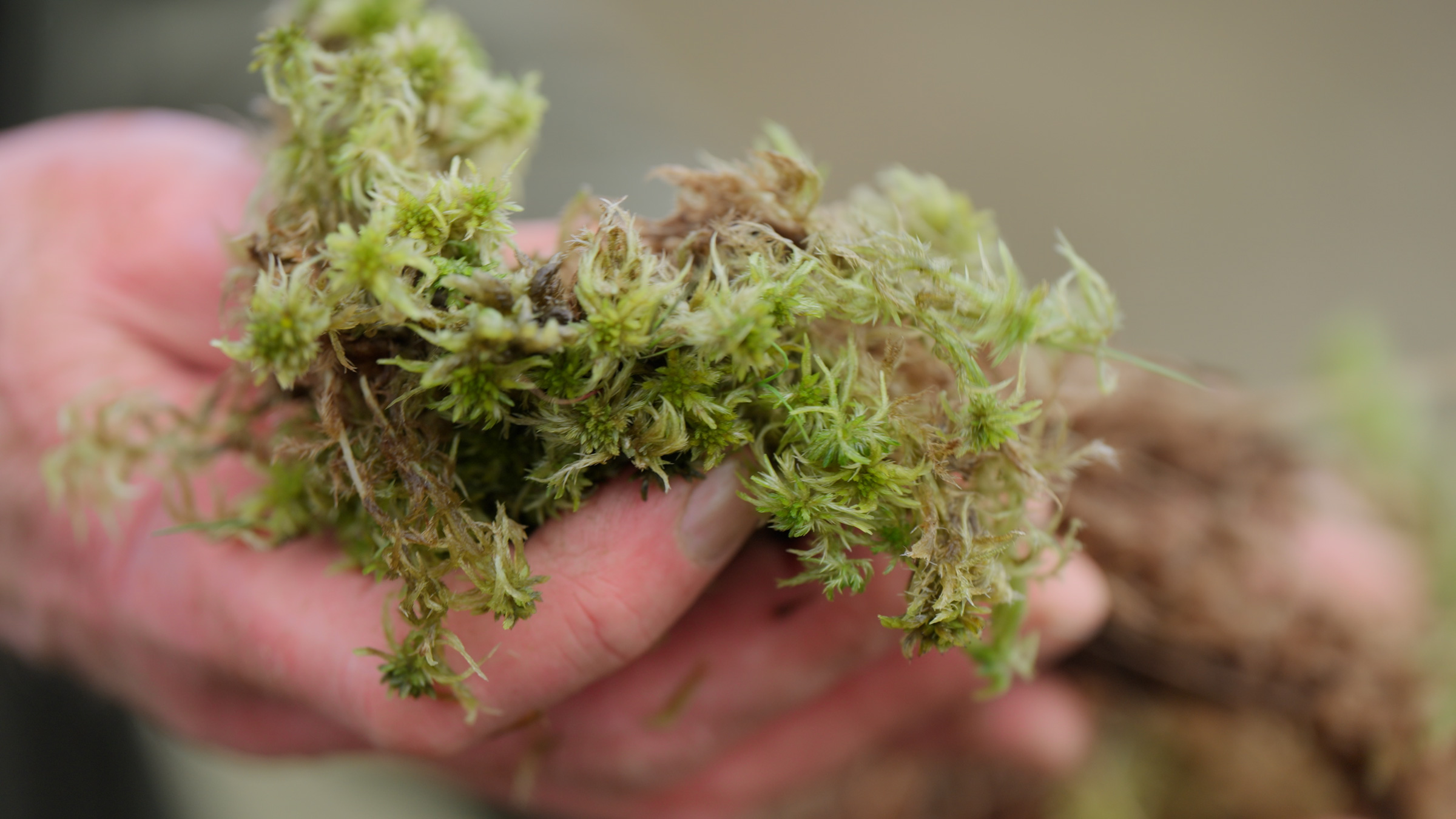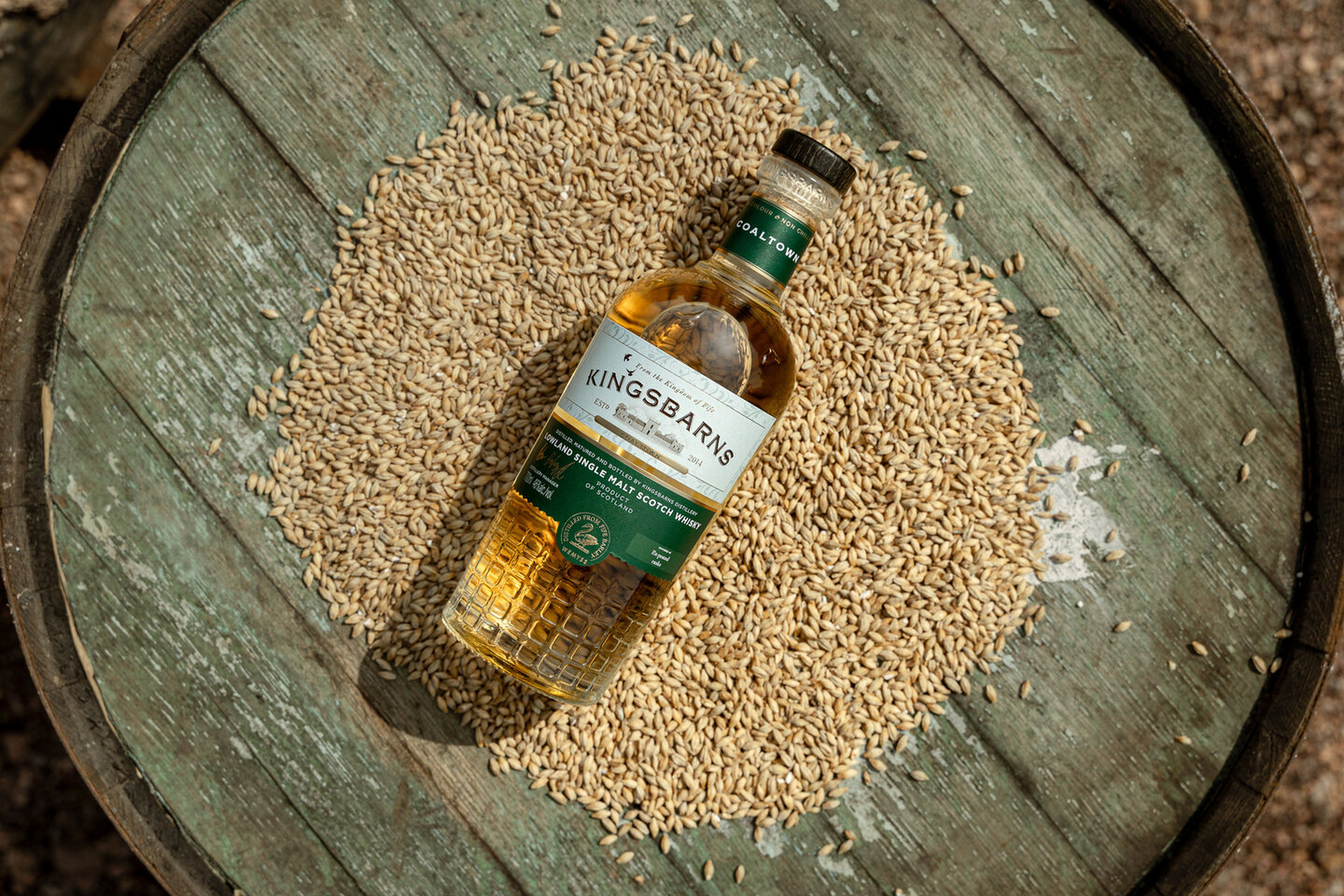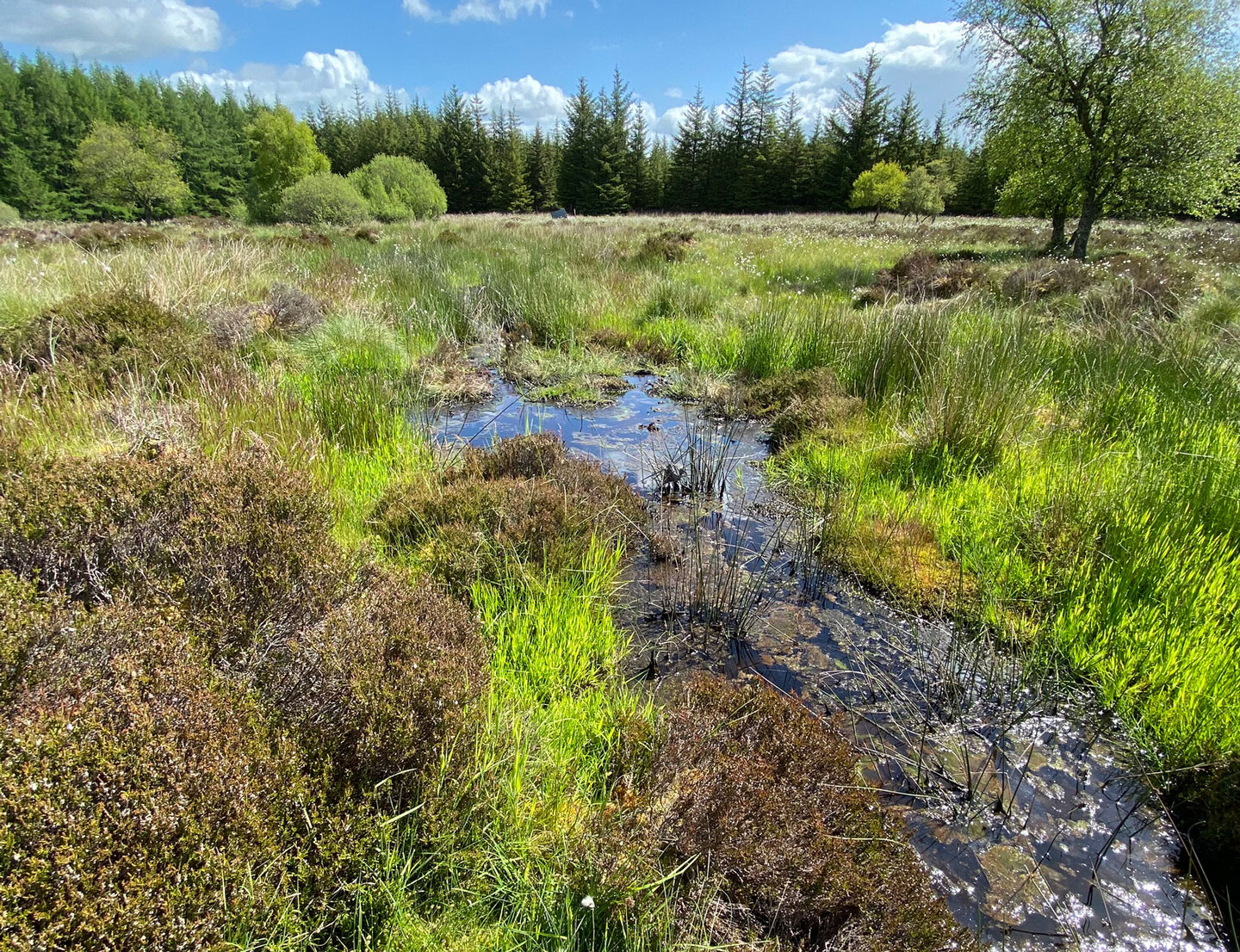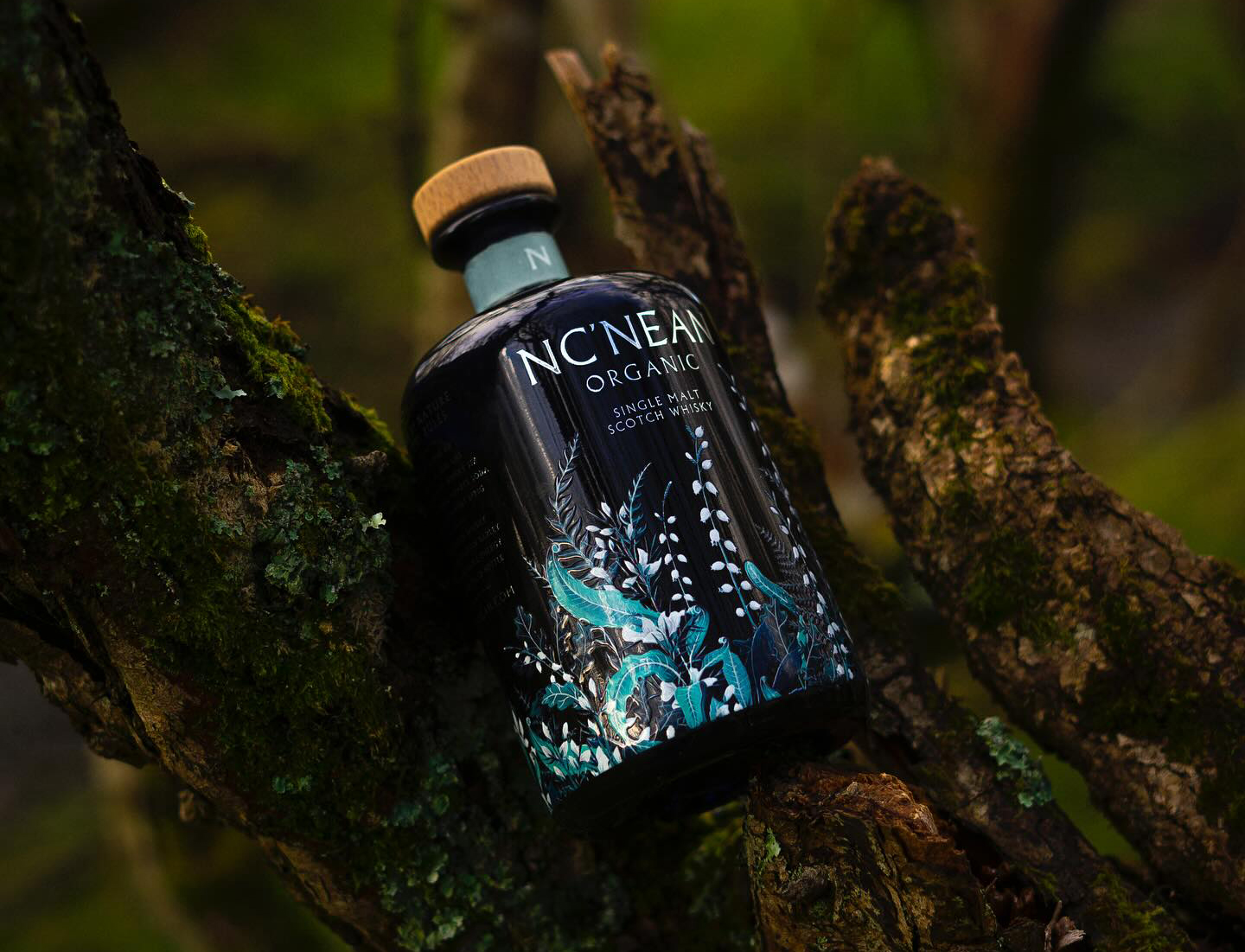Cover Story
Why peat is proving burning issue in Scotch
Peat is central to the flavour of most of the Scotch on sale but its use is attracting criticism on environmental grounds. Jessica Broadbent reports.

Sphagnum moss Credit Suntory Global Spirits
If a mooted ban on the use of horticultural peat gets government approval in the UK, the Scotch whisky industry could be set for increased scrutiny over its use of the precious resource.
Pungent peat fires have long been used to dry malted barley, simultaneously imparting a rich smokiness that carries through into the whisky.
“Peat is a keystone of our island, history, and culture – and something that has shaped Islay for centuries,” says Allan Logan, distillery production director at Remy Cointreau-owned Bruichladdich.
To speak of cutting out peat’s use in whisky production is to speak of the collapse of some of the industry’s most iconic brands – and plenty of jobs. But not to consider reducing or stopping its use would, critics argue, have significant environmental consequences.
Why stop extracting peat?
Peatlands are a type of wetland formed by the accumulation of dead plant material over many years. Growing at an estimated 1mm a year, some of the UK’s oldest peatland is 10,000 years old and 10m deep.
Peatland is thought to cover at least 3% of global land surface and store twice as much carbon as all the world’s forests (UNEP) – in the UK alone, it sequesters around 3 billion tons of carbon, which is released if the land is damaged.
As well as sequestering carbon, peatland is an important water store, reducing flood risk and providing floodplain storage. Around 43% of the UK population also relies on peatlands for drinking water.
“If we were only focused on emissions reduction, peat would not be a priority as it has a limited role to play in our emissions profile,” says Ruth Piggin, director of industry sustainability at the Scotch Whisky Association (SWA).
“However, its importance for nature, water quality, and as a healthy peat bog can act as a carbon store, as well as being a fundamental element of the landscapes of Scotland to which we are so closely connected, peat is one of our priorities.”
Asked what shape the UK’s peatlands are in, Dr Jessica Fìor-Berry, policy lead for the International Union for Conservation of Nature (IUCN) UK peatland programme, said: “Not great.”
Around 80% of the country’s peatlands are degraded, the IUCN estimates – though former-member of parliament Theresa Villiers said in April the figure stood at 87%.
This compares to a global average of 12% of peatlands degraded. “We are well behind,” Fìor-Berry says.
In whisky production, slices of damp peat are cut, or extracted, and dried for burning. Large areas of fertile UK peatland have also been drained to grow crops and trees and graze animals, extracted for industrial horticultural use and burned for grouse shooting.
“There are 3.2 billion tons of carbon locked up in the UK peatlands alone, it’s significant. We cannot afford to keep losing peat from it and the Climate Change Committee (CCC) has just said it needs to be in the top-ten priorities for net zero. It’s a massively important part of that journey,” Fìor-Berry says.
The whisky industry uses around 3% of UK extracted peat – though this figure ranges from 1% to 6% depending on the source. This equates to around 7,000 tons of dry peat, or 30,000 cubic metres, per year.

Bruichladdich Port Charlotte heavily-peated single malt. Credit: Rémy Cointreau
Some point out this is minimal compared to the likes of the horticultural industry. However, if a bill banning horticultural peat extraction – delayed when then-prime minister Rishi Sunak called a General Election in May – is passed by the UK government, the whisky industry could find itself become one of the largest harvesters of peat.
A taste for peat
One sticking point is the fact so many distillers have staked their brand on the smoky, woody and ‘medicinal’ flavours that come from peat use – and drinkers still demand it. Around 80% of Scotch produced is estimated to be peated, according to SWA figures.
Annabel Thomas, founder of unpeated-whisky brand Nc’nean, points out peat is “one of the most tricky sustainability issues in whisky because it’s linked to flavour”.
“All of the other issues that need to be tackled generally don’t impact flavour: how lightweight the packaging is, is the distillery run on renewable energy, are you buying organically farmed barley?” she says.
“Having said that, as we get a broader base of consumers, we do get more and more people saying: ‘I really love what you do, but I really like peated whisky, if you’ve got any plans for one?’”
Asked whether she had noticed peated whisky declining in popularity, she says: “No, if anything, the opposite.”
An irreplaceable flavour?
While other sources of fuel are sometimes used in whisk(e)y production – Eimverk Distillery in Iceland uses sheep dung to smoke barley for its Flóki brand – a like-for-like peat alternative has not yet been discovered.
During a consultation last year on ending the sale of peat in Scotland, whisky organisations argued the industry should be exempt from any ban, citing a lack of alternatives that give the same flavour. Scotch-whisky production guidelines also ban the addition of any flavourings, or use of ingredients beyond cereal, water and yeast.
“The use of peat in the malting process is an essential component in the production of many Scotch whiskies, including in the vast majority of blended Scotch whisky and all peated single-malt Scotch whisky,” the SWA said in its response to the consultation. “[A total ban on peat] would lead to the end of many key brands and numerous jobs across Scotland.”
Malting industry body the Maltsters’ Association of Great Britain (MAGB) said stopping using peat “would only be possible if a viable alternative to peat was found” but “this is not looking to be a likely prospect for some time”.
At the moment nothing has been identified which replicates peat flavour.
Barry Harrison, The Scotch Whisky Research Institute
The Scotch Whisky Research Institute (SWRI) has been working with Edinburgh research university Heriot Watt to see whether other biomasses could be used in place of peat to produce the same flavour.
“At the moment nothing has been identified which replicates peat flavour,” Barry Harrison, senior scientist at the SWRI tells Just Drinks. “This is perhaps not surprising given the distinctive aroma of peat smoke.
“There is also the issue that without peat, any whisky produced could no longer be referred to as peated. Also, any replacement would have to be sufficiently more sustainable than peat to justify its use.
“However, we want to be as rigorous as possible in understanding what might be possible. It may be, for example, that a combination of different biomasses can reasonably replicate peat smoke flavour; peat is after all a partially decomposed mix of a range of plant species.”
Scotch business Wemyss Family Spirits has been experimenting with finding a peated flavour through using ex-peated casks. In July, it launched Coaltown, a whisky for its Kingsbarns distillery, Kingsbarns, entirely aged in ex-peated casks from the family’s namesake distillery, Wemyss Malts.

Coaltown. Credit: Kingsbarns
Production director Isabella Wemyss describes it as “a very light, classically Lowland spirit”, which, she says, helps it to “pick up other characters very easily”.
She adds: “Peat is so much of the DNA of Scotch whisky, it’s very difficult to change that DNA. We’re trying to replicate that DNA, if you like, by doing it in a more environmentally friendly way.
“This is an exciting departure, because it’s something that nobody else is really doing – being able to regularly produce a single-malted whisky without actually using peat.”
Using peat more efficiently
While alternatives are searched for, distilleries are focusing on more efficiently using peat.
The SWA has been working with the SWRI and MAGB to conduct research into the malting process.
The SWRI’s Harrison says the group’s “initial focus” has been looking at the impacts of peat composition, peat combustion temperature, air flow through the kiln and moisture content of the malt and peat change, on the malt.
“We have identified optimum conditions for maximising phenols levels – key indicators of peating level,” he says. “Additionally, our research has highlighted how changes in these kilning variables affect not only the overall intensity of peaty aroma but also the balance of different aspects of peaty aroma.
“There are hundreds of compounds in peat smoke which may contribute to flavour and kilning variables affect different compounds in different ways. The challenge is to ensure that we can optimise the process and control flavour at the same time.”
The team is looking at maximising flavour compounds in the peat smoke and preventing the loss of peat-smoke compounds in the distillery.
“Limiting losses to draff, pot ale and spent lees would further enhance the efficiency of flavour transfer from peat to whisky, as would improving our understanding the fate of different peat flavour compounds during the maturation process,” he says. “Research is ongoing, but without successful conclusion yet.”
The SWRI is also looking into using leftover peat from construction projects to make peated malt. “This is optimisation in the sense that we are minimising overall carbon footprint by utilising peat that has to be dug up to allow for infrastructure being built by energy companies,” Harrison explains.
Restoration and extraction
It can take a decade for a peat bog to return to health, depending on the level of degradation.
In a progress report presented to the UK government in July, the Climate Change Committee (CCC) said peatland restoration rates were “significantly off track”. In 2023, 12,700 hectares of peatland were restored but the country is aiming to reach 30,000 hectares a year by 2026 – a target the CCC said was “significantly less ambitious” than its recommendation.
There’s been a gradual uplift in the amount of people restoring peat but it’s still not enough.
Dr Jessica Fìor-Berry, The International Union for Conservation of Nature
Fìor-Berry says: “There’s been a gradual uplift in the amount of people who are restoring but it’s still not enough.” However, as awareness (and funding) in peatland restoration increases, the number of skilled peatland contractors are also increasing, giving some hope the quantity and quality of restoration work will increase.
Japan’s Suntory Holdings launched a peatland restoration project through spirits arm Suntory Global Spirits in Scotland in 2021.
Through the Peatland Water Sanctuary initiative, the Laphroaig brand owner is aiming to restore as much peat as it takes out each year by 2030, and to double that by 2040. The 2030 target involves restoring a minimum of 1,300 hectares of peatland, calculated on the basis of 1mm of growth a year.

A peat bog at Ardmore, part of Suntory Global Spirits’ peat restoration project. Credit: Suntory Global Spirits
Three of Suntory’s five Scotch distilleries “rely heavily” on peat. “We’re thinking a bit more holistically about the health of the whole bog and not just what we need for our business,” Alistair Longwell, head of distillation and environment at Suntory Global Spirits, says.
Suntory owns around 100 hectares of peatland on Islay and is working with landowners and others to restore the remainder of its target. It funds the restoration work and maintenance of the peatland up to around five years.
The $4m+ Peatland Water Sanctuary project began by restoring 14 hectares of peatland at Knockandy Hill, near the Ardmore distillery in Aberdeenshire. Longwell says: “You’d be amazed what you can see already [at Knockandy Hill] after two years. You can bounce on it,” Longwell says. “The whole area is so wet and you have these huge areas of sphagnum moss (a key peat-forming plant group) and other flora.”
The second phase began in November 2022 at the Airds Moss reserve in East Ayrshire, in partnership with wildlife charity RSPB Scotland. Around 22.5 hectares have been restored to date out of a planned 160 hectares.
“There’s a lot of good momentum [in the industry] from when we started to think about this as a business five years ago,” Longwell says.
There’s still a long way to go on restoration but we’re starting to get ahead of the curve now as an industry.
Alistair Longwell, Suntory Global Spirits
“There’s still a long way to go but I think we’re starting to get ahead of the curve now as an industry. [Suntory has] really set the standard for the restoration side and really started to pull the industry into the thinking of full replenishment, minimum one-for-one – and that’s where most companies are now looking, how to truly make peat sustainable by putting back what we take out. That’s fundamentally what we are trying to achieve with the first stage of our Peatland Water Sanctuary.”
Other initiatives include Edrington’s appointment of a peatland management project officer at the Highland Park Distillery in Orkney. The officer is responsible for monitoring both extraction and restoration work at Hobbister Moor, the distillery’s source of peat.
Last year, Whyte & Mackay worked with environmental consultancy Angus Davidson to restore peatlands near Ben Wyvis and Loch Glass (the water source for Invergordon Distillery). Lagavulin brand-owner Diageo has provided funding to the RSPB to conduct restoration at An Lurg in the Cairngorms.
“What we would like to see, is [companies] doing more when it comes to restoration,” says Fìor-Berry. While she says there is “some good work” going on in the area, she adds: “There could be greater investment, given the urgency of climate change and the pressures on our habitats”.
New brands championing unpeated styles
While the ethical water is murky for established brands that rely on peat, opinions on new brands and SKUs are clearer cut.
Founded in 2017, Nc’nean does not peat any of its whisky. Thomas says: “It was absolutely obvious to us that we shouldn’t use peat from a sustainability point of view.”
“My view is that if you’re setting up a new business in this day and age, it’s kind of incumbent on you to do things as sustainably as possible and using peat is not really justified, I would argue, now that we know [more about it].
“If you’re a historic, heritage brand and you’ve spent years building a brand based on peat, it’s kind of hard to change. But if you have the chance to start from a blank sheet of paper, don’t use peat and invest your time persuading people it’s delicious without peat.”

Credit: Nc’nean / Facebook
Fìor-Berry agrees. “It’s probably not the best way to go. Areas are restorable but they’re not restorable while you’re still extracting them,” she says. “I think if you’re a new producer coming in, it would be better to explore the different flavor profiles.”
Thomas also sees the unpeated style as a way to “bring a new set of drinkers into whisky”. “Peat is quite difficult to get your head around and I think some people are put off Scotch for a long time by tasting peated whiskey first and thinking that’s all Scotch is, which is completely untrue,” she says.
Using peat is not really justified, I would argue.
Annabel Thomas, Nc’nean
While Thomas describes peat as “like Marmite”, she says unpeated styles have a broader consumer base. “Even those who like peated whisky are unlikely to say, ‘God I hate light and fruity whisky,’” she says.
“Whisky has so many barriers already to people drinking it… If you add peat on top of all of that, it feels like there’s a lot of reasons for people not to like or try Scotch and I’m all about trying to break as many of those barriers down as possible.”
Peat’s link to flavour makes it a complex, and controversial, topic in whisky sustainability. With 80% of Scotch made in a peated style, Piggin at the SWA says: “The role of peated whisky within the wider Scotch whisky and spirits landscape cannot be underestimated.”
Fìor-Berry adds: “At the IUCN our overarching goal is healthy, thriving peatland, so we don’t condone extraction in any of its forms. But we do understand that there is a balance to be struck.”
With peatland restoration work ongoing but slow, pressure could turn on scientists and Scotch industry bodies to find and approve viable alternatives.